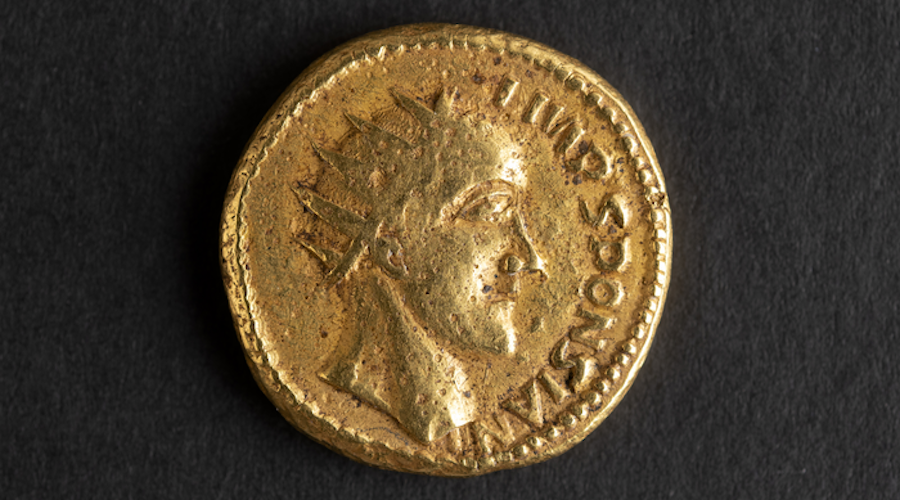The coins are all housed in The Hunterian collection at the University of Glasgow. The one that was considered fake was among a handful of coins of the same design unearthed in Transylvania, in present-day Romania, in 1713. They have been regarded as forgeries since the mid-19th century, due to their crude, strange design features and jumbled inscriptions.
The authenticity of one of the coins was demonstrated after the researchers examining it found minerals on its surface that were consistent with it being buried in soil over a long period of time and then exposed to air. These minerals were cemented in place by silica. The team also found a pattern of wear and tear that suggested the coin had been in active circulation.
Gold mining area
“A scientific analysis of these ultra-rare coins rescues the emperor Sponsian from obscurity,” Paul N. Pearson, lead author of the study, said in a media statement. “Our evidence suggests he ruled Roman Dacia, an isolated gold mining outpost, at a time when the empire was beset by civil wars and the borderlands were overrun by plundering invaders.”
Pearson explained that the Roman province of Dacia, a territory overlapping with modern-day Romania, was a region prized for its gold mines. Archaeological studies have established that the area was cut off from the rest of the Roman empire around 260 CE. Surrounded by enemies, Sponsian may have been a local army officer forced to assume supreme command during a period of chaos and civil war, protecting the military and civilian population of Dacia until order was restored, and the province evacuated between 271 and 275 CE.
Recognizing this and being unable to receive official issues from the mint in Rome, Sponsian seems to have authorized the creation of locally produced coins, some featuring an image of his face, to support a functioning economy in his isolated frontier territory.
Back and forth
When the coins were discovered in the early 18th century, they were thought to be genuine and classed alongside other imitations of Roman coins made beyond the fringes of the empire. However, from the mid-19th century, attitudes changed. Coins from the hoard were dismissed as fakes because of the way they looked. This has been the accepted view until now.
The new study is the first scientific analysis that has been undertaken on any of the Sponsian coins. The research team used powerful microscopes in visible and ultraviolet light, as well as scanning electron microscopy and spectroscopy – studying how light at different wavelengths is absorbed or reflected – to study the coins’ surface.
Only four coins featuring Sponsian are known to have survived to the present day, all apparently originally from the 1713 hoard. Another is in Brukenthal National Museum in Sibiu, Romania. High magnification microscopic analysis performed there, following the research on the coin at The Hunterian, has revealed similar evidence of authenticity.
“For the history of Transylvania and Romania in particular, but also for the history of Europe in general, if these results are accepted by the scientific community they will mean the addition of another important historical figure in our history,” Alexandru Constantin Chituță, interim manager of the Brukenthal National Museum, said.



